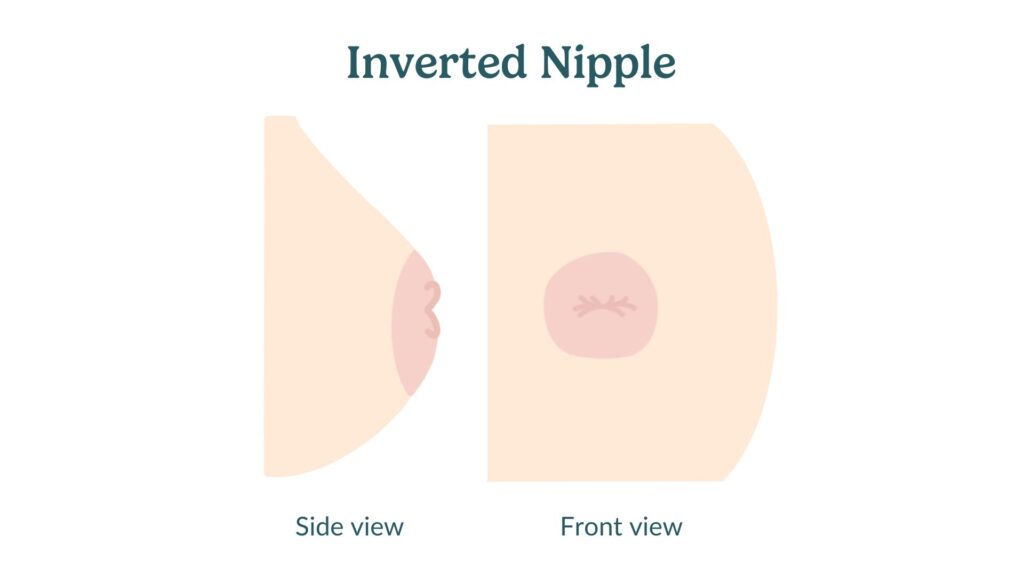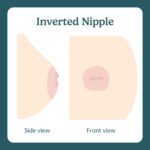inverted nipple

Inverted nipple
An inverted nipple is a nipple that retracts inward instead of pointing outward. This condition can make it more challenging for a baby to latch on properly during breastfeeding. Inverted nipples can be present from birth or develop over time. They may vary in severity, with some being easily pulled out and others remaining retracted even with stimulation. Learn more about inverted nipples.
What to watch out for
Breastfeeding with inverted nipples can present some challenges, but with the right techniques and tools, many mamas can successfully breastfeed.
Difficulty with latch
Inverted nipples can make it harder for your baby to latch properly. A good latch is essential for effective milk transfer and to prevent nipple pain. Watch for signs of a good latch, such as your baby’s mouth covering most of the areola, rhythmic sucking, and swallowing sounds. If you’re having trouble, try using techniques like breast compression or a nipple shield, and seek help from a lactation consultant. Check that your baby has a good latch.
Sore or damaged nipples
Improper latching due to inverted nipples can cause sore or damaged nipples. If you experience pain, redness, or cracking, use a nipple balm to soothe and heal your nipples. Ensuring a proper latch and using a nipple shield can also help reduce pain. We advise against using lanolin-based creams; use “nipple balms” instead. Learn more about nipple care.
Milk supply issues
If your baby has difficulty latching, it may affect your milk supply because the breast isn’t being emptied efficiently. To maintain your milk supply, breastfeed frequently and consider pumping after feeds to ensure your breasts are fully emptied. Monitor your baby’s weight gain and diaper output to ensure they are getting enough milk. Learn more about increasing milk supply.
Physical limitations or health circumstances
Certain health conditions or physical characteristics might make breastfeeding with inverted nipples more challenging.
Severe inversion
Severely inverted nipples may not protrude at all, making it very difficult for your baby to latch. In such cases, using a nipple shield or breast shells can help. A lactation consultant can provide personalized advice and support. Read more about nipple shields.
Previous breast surgery
Breast surgery, such as augmentation or reduction, can affect the structure and sensitivity of your nipples, complicating breastfeeding. If you’ve had surgery, consult with a lactation consultant to develop a breastfeeding plan that works for you.
Other terms
Understanding related terms can help you navigate breastfeeding with inverted nipples more effectively.
- Latch: The way your baby attaches to your breast. A good latch is important for effective breastfeeding and preventing nipple pain.
- Nipple shield: A thin silicone cover that fits over the nipple and areola to help babies latch on to the breast.
- Milk supply: The amount of milk your body produces. Effective breastfeeding techniques help maintain a healthy supply.
- Breast shells: Devices worn inside the bra to help draw out inverted nipples and make latching easier.
- Lactation consultant: A breastfeeding expert who can help you with breastfeeding challenges, including those related to inverted nipples.


